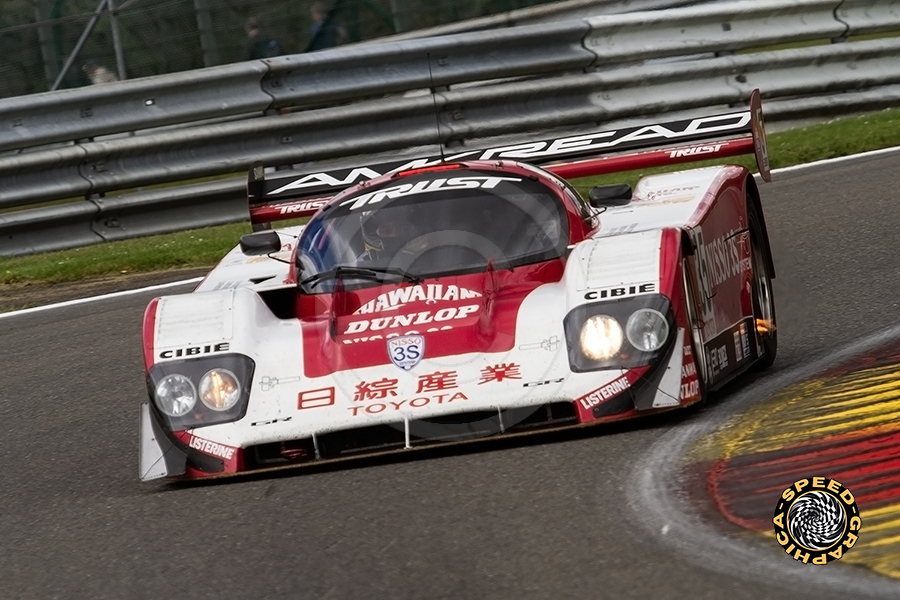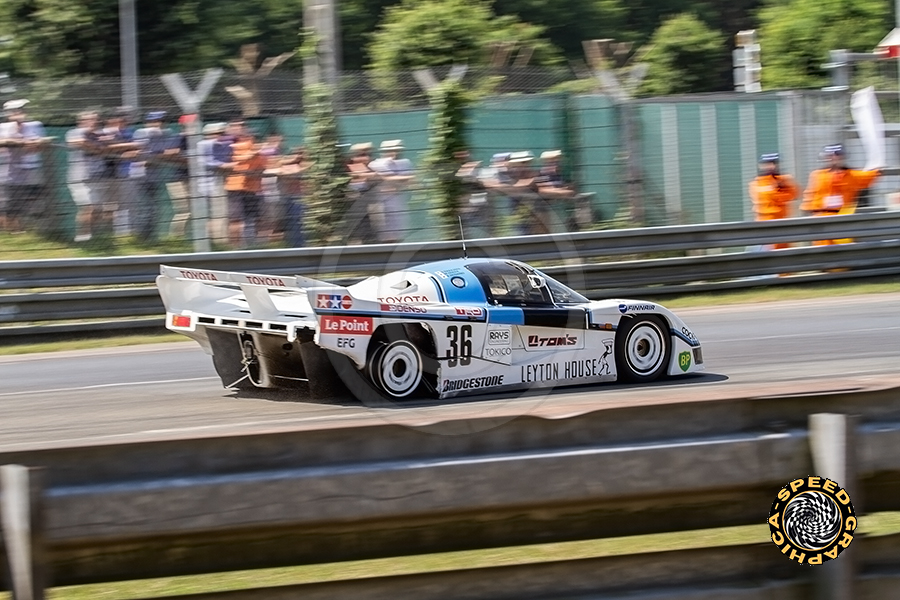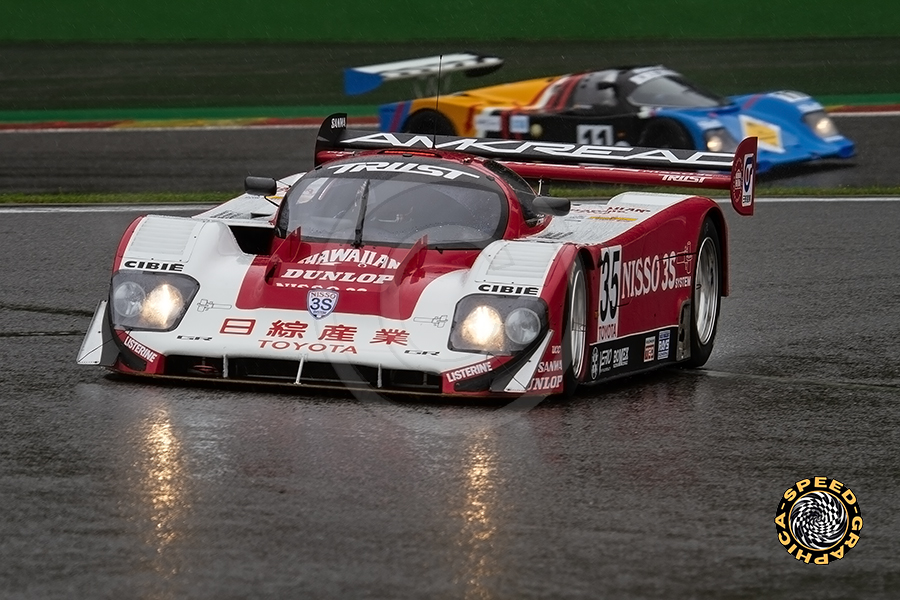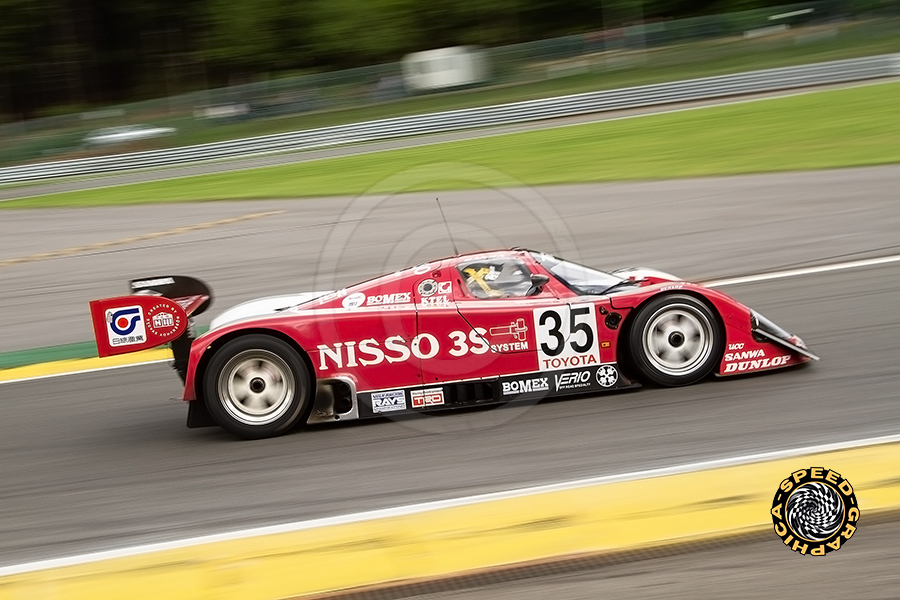Group C: The Rise and Fall of the Golden Age of Endurance Racing: Toyota

By Marcel Hundscheid / Speed-O-Graphica
In this part of our long-running look back at Group C race cars, we take a look at Toyota’s hard-fought run in the Group C Championship and the All Japan Sports Prototype Championship.
The first car to appear on the starting grid in Group C was the Toyota TOM’s Celica C, which was developed in collaboration with TOM’s. TOM’s (Tachi Oiwa Motor Sport) is a Japan-based automotive aftermarket manufacturer and tuner of Toyota and Lexus passenger cars. TOM’s Celica was also known as Toyota 82C and was based on the Celica passenger car. Dome, a Japanese manufacturer of sports cars and open wheel cars, was brought in to build cars for Toyota’s motorsport department, which initially competed in the All Japan Super Silhouette Championship. Later, cars built to Group C specifications were entered in the All Japan Sports Prototype Championship, which in turn also appeared in the World Sportscar Championship.
The Toyota TOM’s Celica C, which was also known as TOM’s 82C, was equipped with a 2.1-litre 4T-GT turbo engine. Toyota guaranteed the design and production, but in a partnership with TOM’s.The TOM’s 83c was the marque’s first Group C sports car, and debuted at the 1000 km of Fuji in 1983 built under the same partnership. This car competed in the World Sportcar Championship, the All Japan Sports Prototype Championship and the 24 Hours of Le Mans. The collaboration with TOM’s continued until 1988 and led to the Toyota TOM’s 84C, 85C, 86C, 87C and 88C. The 84C, 85C, 86C, 88C and 88C-V were built by Dome.

In 1984 Toyota entered the TOM’s 84C to challenge Porsche’s 956 for top honors in Group C. It incorporated an aluminium twin-tube monocoque frame, 2,090cc inline 4-cylinder turbocharged engine and ground effect chassis undersurface. Despite Toyota’s efforts, the 84C couldn’t beat the 956 in Group C, although the car was used by a number of teams.Toyota entered two TOM’s 85Cs in the 1985 24 Hours of Le Mans. One of the two TOM’s/Dome aluminium monocoque was equipped with a 2.1-litre four cylinder turbocharged engine finished the race in 12th place.
Two further developed Toyota TOM’s/Dome 86C cars entered the grid at the 24 Hours of Le Mans in 1986. The 86C had a completely redesigned body to generate much more downforce. Sadly, neither car made it to the finish. The first had to retire before dawn, while the second was racing in 7th position, and then with just a single hour before the finish, the second car was forced into retirement with a turbo problem.
From 1987 onwards, the Group C cars only appeared under the Toyota name, although they were still built by Dome. The 87C was another evolution of the existing design with an aluminum monocoque. The 2.1-litre power source was equipped with a turbocharger good for 680 hp. On the debut at Suzuka, Alan Jones and Geoff Lees finished third. Although the subsequent race in Fuji was won, participation in the 24 Hours of Le Mans ended in disaster.

The 88C followed in 1988, which used a V8 power source. However, this car did not bring Toyota success in Le Mans either, with a 12th and 24th place in the standings, which also applied to the 88C-V. Whatever Toyota tried, the long-awaited success did not materialize and this did not change with the arrival of the 89C-V. What was striking was that Toyota was able to follow the pace of Mercedes, Nissan and Jaguar. With the arrival of the 90C-V, which stood out because of a five centimeter longer wheelbase, top ten finishes were recorded, although a podium place or the long-awaited victory still did not materialize.
The Toyota 91C-V was the next in the line of Group C sports cars that debuted in 1991. Toyota decided that year not to participate in all World Sports Car Championship competitions, therefore also missing the starting grid of the 24 Hours of Le Mans that year. Following 1991, the marque worked on a generation of completely new sports prototypes under the amended Group C regulations. When Mazda claimed overall victory in Le Mans that year, Toyota was further motivated. In addition to the brand new TS010, which was equipped with a 3.5-litre V10 power source, Toyota also decided to further develop the existing 91C-V, which in turn led to the 92C-V.
Initially it was intended that this car would only be used in the Japanese long-distance championship. However, it was decided to also use 2 cars as backup during the 24 Hours of Le Mans for the TS010. In Le Mans, one of the two 92C-Vs used by Trust Racing finished fifth. The 93C-V was ultimately the last version built under the Group C regulations. With a 1st and 2nd place in the C2 category, Toyota could finally speak of a victory, although the cars in the general classification had to make do with a fifth and sixth place.
In the next part of our Group C overview we complete this series with a look at the unique Veskanda and Zakspeed.

